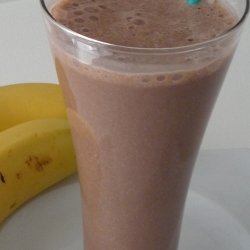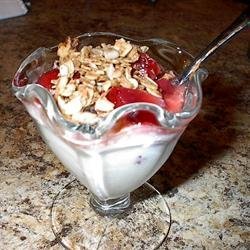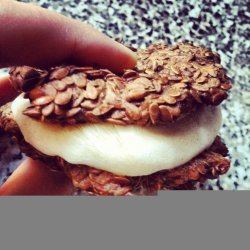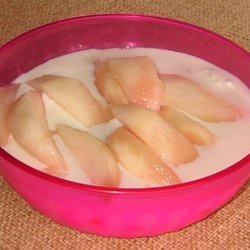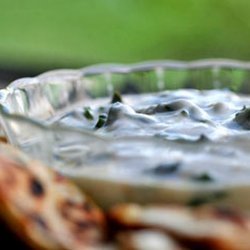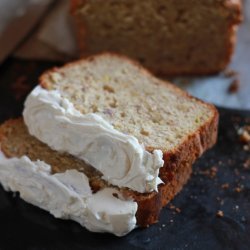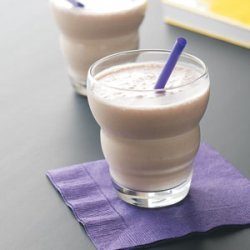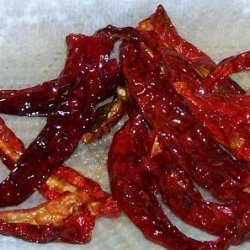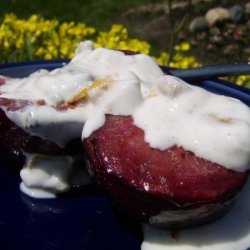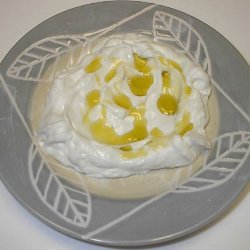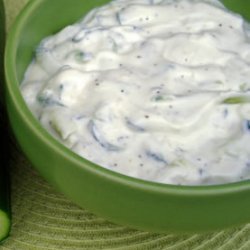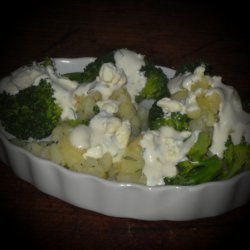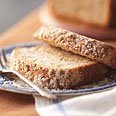Directions:
- Pour the milk into a pot. Heat the milk until it is almost boiling, stirring with a metal spoon. You'll see small bubbles form around the edges and steam beginning to rise.
- Check the temperature- it should be around 180-185°F You can use a candy thermometer if you want. Remember to heat slowly and stir often to prevent scorching.
- Allow the milk to cool at room temperature. Stir frequently in order to accurately check the temperature. In Lebanon, they cool it till they can stick their pinky finger in for 10 seconds, but it's better to use a thermometer. It should reach 112°F.
- Don't proceed until the milk is below 120F(49C), and don't allow it to go below 90F (32C). 105-110 (41-43) is optimal.
- Add nonfat dry milk, if desired. Nonfat dry milk will thicken and increase the nutritional content of the yogurt.
- Add the starter. The first time you make your own yogurt, use store-bought plain yogurt. Be certain it has active cultures on the label. For each quart of your cooled milk, you'll need 2 tablespoons of yogurt. When I make it using a gallon of milk, I add one whole single serving container. Let the starter yogurt sit at room temperature while you are waiting for the milk to cool. This will prevent it from being too cold when you add it inches.
- Allow the yogurt bacteria to incubate. Keep the yogurt warm to encourage bacteria growth (between 105F and 122F (41C and 49C) is ideal). I just put the lid on the pot and wrap it in heavy towels, but you can use your oven, just make sure the thermometer is accurate. You'll need to use your candy thermometer and perhaps turn your oven on and then off again periodically or keep the oven light on to warm. Most ovens don't have set temperatures this low. To check the oven temperature, place your thermometer into a bowl of water inside the oven. Wait until the yogurt is thick, about the consistency of pudding.
- Important: Keep the yogurt still during this process. Jiggling won't ruin it, but it makes it take a lot longer. It can take anywhere from 8-14 hours to incubate. The longer it incubates, the thicker and more tangy the final yogurt will be.
- Refrigerate the yogurt. Place the yogurt in your fridge for several hours before serving. It will keep for 1-2 weeks. If you are going to use some of it as starter, use it within 5-7 days, so that the bacteria still have growing power. Whey, a thin yellow liquid, will form on the top. You can pour it off or stir it in before eating your yogurt.
- Don't get discouraged if it turns out a little runny your first time (mine did). You can always put a cheese cloth in a strainer to drain some of the excess fluid.
Nutrition Facts
| Amount Per 1 Serving | |||
| Calories | 134.37 Kcal (563 kJ) | ||
| Calories from fat | 10.95 Kcal | ||
| % Daily Value* | |||
| Total Fat | 1.22g | 2% | |
|---|---|---|---|
| Cholesterol | 11.27mg | 4% | |
| Sodium | 154.69mg | 6% | |
| Potassium | 570.65mg | 12% | |
| Total Carbs | 18.17g | 6% | |
| Sugars | 18.17g | 73% | |
| Protein | 10.99g | 22% | |
| Vitamin C | 0.4mg | 1% | |
| Calcium | 442.8mg | 44% | |
| Amount Per 100 g | |||
| Calories | 38.85 Kcal (163 kJ) | ||
| Calories from fat | 3.16 Kcal | ||
| % Daily Value* | |||
| Total Fat | 0.35g | 2% | |
|---|---|---|---|
| Cholesterol | 3.26mg | 4% | |
| Sodium | 44.73mg | 6% | |
| Potassium | 165mg | 12% | |
| Total Carbs | 5.25g | 6% | |
| Sugars | 5.25g | 73% | |
| Protein | 3.18g | 22% | |
| Vitamin C | 0.1mg | 1% | |
| Calcium | 128mg | 44% | |
* Percent Daily Values are based on a 2000 calorie diet. Your daily values may be higher or lower depending on your calorie needs.
Find out how many calories should you eat.
Get Your Recipe of Health!
Follow RecipeOfHealth on Facebook!


